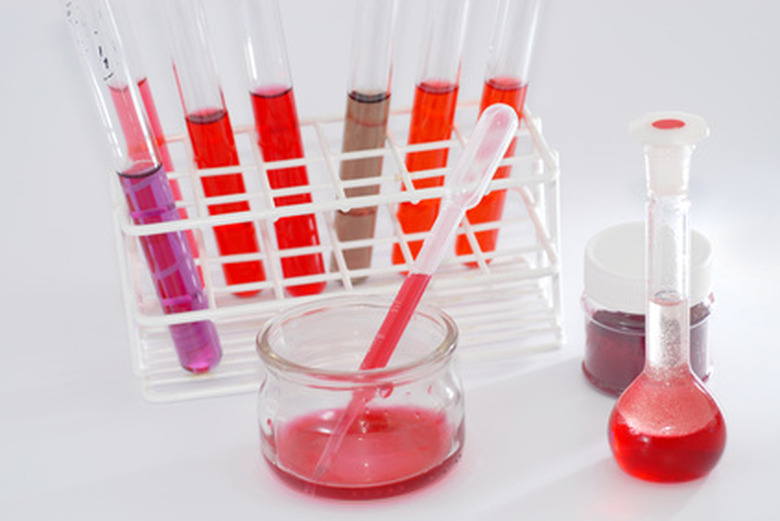Activation Energy In An Endergonic Reaction
In a chemical reaction, the starting materials, called reactants, are converted to products. While all chemical reactions require an initial energy input, referred to as the activation energy, some reactions result in a net release of energy into the surroundings, and others result in a net absorption of energy from the surroundings. The latter situation is called an endergonic reaction.
Reaction Energy
Chemists define their reaction vessel as the "system" and everything else in the universe as the "surroundings." Therefore, when an endergonic reaction absorbs energy from the surroundings, the energy enters the system. The opposite type is an exergonic reaction, in which energy gets released into the surroundings.
The first part of any reaction always requires energy, no matter the reaction type. Even though burning wood gives off heat and spontaneously occurs once it gets started, you do have to start the process by adding energy. The flame you add to start the wood burning provides the activation energy.
Activation Energy
To get from the reactant side to the product side of the chemical equation, you must overcome the activation energy barrier. Each individual reaction has a characteristic barrier size. The height of the barrier has nothing to do with whether the reaction is endergonic or exergonic; for instance, an exergonic reaction may have a very high activation energy barrier, or vice-versa.
Some reactions take place in multiple steps, with each step having its own activation energy barrier to overcome.
Examples
Synthetic reactions tend to be endergonic, and reactions that break molecules down tend to be exergonic. For example, the process of amino acids joining to make a protein, and the formation of glucose from carbon dioxide during photosynthesis are both endergonic reactions. This makes sense, as processes that build bigger structures are likely to require energy. The reverse reaction–for instance, cellular respiration of glucose into carbon dioxide and water–is an exergonic process.
Catalysts
Catalysts can reduce the activation energy barrier of a reaction. They do so by stabilizing the intermediate structure that exists between that of the reactant and product molecules, making the conversion easier. Basically, the catalyst gives the reactants a lower-energy "tunnel" to pass through, making it easier to get to the product side of the activation energy barrier. There are many types of catalysts, but some of the best-known ones are enzymes, catalysts of the biology world.
Reaction Spontaneity
Regardless of activation energy barrier, only exergonic reactions occur spontaneously, because they give off energy. Yet, we still need to build muscle and repair our bodies, which are both endergonic processes. We can drive an endergonic process by coupling it with an exergonic process that provides enough energy to match the difference in energy between reactants and products.
Cite This Article
MLA
Yool, Brooke. "Activation Energy In An Endergonic Reaction" sciencing.com, https://www.sciencing.com/activation-energy-endergonic-reaction-6616037/. 24 April 2017.
APA
Yool, Brooke. (2017, April 24). Activation Energy In An Endergonic Reaction. sciencing.com. Retrieved from https://www.sciencing.com/activation-energy-endergonic-reaction-6616037/
Chicago
Yool, Brooke. Activation Energy In An Endergonic Reaction last modified August 30, 2022. https://www.sciencing.com/activation-energy-endergonic-reaction-6616037/
